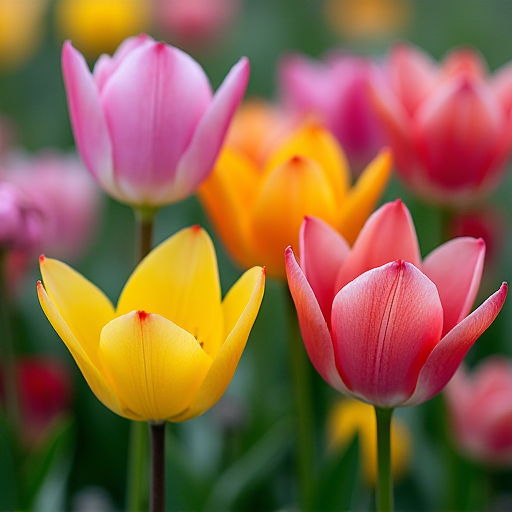
Why Do Flowers Have Different Scents?
Flowers are one of nature's most beautiful and intriguing creations, captivating us with their vibrant colors and heady scents. The aromatic allure of flowers is not merely for human enjoyment but serves a critical role in the natural world. This article explores the fascinating reasons behind the diverse scents of flowers, delving into the biological, ecological, and evolutionary factors that contribute to this aromatic variety.
The Role of Scent in Pollination
Attracting Pollinators
One of the primary reasons flowers have different scents is to attract specific pollinators. Flowers have co-evolved with their pollinators, developing scents that appeal to the sensory preferences of their target species. For instance, sweet-smelling flowers often attract bees, butterflies, and birds, while flowers with a more pungent or musky odor may appeal to moths, flies, or beetles.
Pollinators rely on the scent to locate flowers, especially when visual cues are limited, such as at night or in dense vegetation. The scent acts as a signal, guiding pollinators to the nectar and pollen rewards the flower offers. In return, the flower benefits from the transfer of pollen, which is essential for reproduction.
Species-Specific Scents
Different flowers emit distinct scents to ensure they attract the right kind of pollinator. This specificity reduces competition between plant species and enhances the efficiency of pollination. For example, the carrion flower (genus Stapelia) emits a smell similar to rotting flesh, attracting flies that are drawn to such odors. This specificity ensures that the right pollinators visit the flower, increasing the chances of successful pollination.
Chemical Composition of Floral Scents
Volatile Organic Compounds (VOCs)
The scents of flowers are produced by a complex mixture of volatile organic compounds (VOCs). These compounds are released into the air from the flower's petals and other parts. The composition and concentration of VOCs vary significantly among different flower species, resulting in a wide range of scents.
Biosynthesis of Scents
The biosynthesis of floral scents involves various biochemical pathways. Terpenoids, benzenoids, and phenylpropanoids are the primary classes of compounds responsible for floral fragrances. The specific combination and proportion of these compounds determine the unique scent of each flower. Genetic and environmental factors can influence the biosynthesis process, leading to variations in scent even within the same species.
Evolutionary Advantages of Scent Diversity
Avoiding Predators and Herbivores
In addition to attracting pollinators, some floral scents serve as a defense mechanism. Certain scents can deter herbivores and predators, protecting the flower from being eaten or damaged. For example, the scent of marigolds is known to repel insects, acting as a natural pesticide.
Promoting Genetic Diversity
By attracting specific pollinators, flowers can promote cross-pollination between different individuals of the same species, enhancing genetic diversity. This genetic diversity is crucial for the adaptability and survival of a species in changing environmental conditions. The diversity of floral scents helps ensure that pollination occurs over a broad range of conditions and habitats.
Scent and Human Interaction
Cultural Significance
The diverse scents of flowers have held significant cultural importance throughout history. They are used in perfumes, aromatherapy, and rituals. Different cultures attribute various meanings and symbolism to floral scents, further enriching the human experience of these natural wonders.
Agricultural and Economic Impact
The fragrance industry heavily relies on floral scents for the production of perfumes and essential oils. Understanding the chemical composition and biosynthesis of these scents has allowed for the development of synthetic fragrances that mimic natural ones, contributing to the economic value of flowers.
Conclusion
The diversity of floral scents is a testament to the intricate interplay between plants and their environments. From attracting pollinators to deterring predators and enhancing genetic diversity, the scents of flowers play a crucial role in the survival and reproduction of plant species. While humans have found various uses for these scents, their primary purpose remains deeply rooted in the natural world's ecological and evolutionary processes. As we continue to explore and understand the complexities of floral scents, we gain greater appreciation for the delicate balance of nature.
